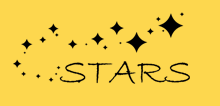Mentor
Dr. Jeffrey S. Bedwell
Abstract
Previous research has shown a unique effect of red light on visual processing related to both schizophrenia and positive schizotypy. The current study examines whether this effect is influenced by sex in a more broadly-defined schizotypy sample. A location backward masking (BM) task with three color background conditions (red, green, and gray) was administered to 34 undergraduate students (59% female) with a high score on the Schizotypal Personality Questionnaire (SPQ) and 39 students (51% female) with a low score. Results revealed that the group by color interaction was significant for the male participants, while it did not approach significance in the females. The male schizotypy participants showed a significant decrease in BM accuracy to the red (vs. green) background, and the male control participants showed a non-significant mean increase in accuracy. A decrease in accuracy to the red background in the male participants showed the strongest relationship with higher scores on the Interpersonal (negative symptom) factor of the SPQ (particularly with the Constricted Affect subscale). The decrease in BM accuracy to red light was related to higher accuracy (reduced masking) on the "baseline" green background condition in the males, which may relate to a hypoactive magnocellular visual pathway in some of the schizotypy participants. Findings suggest that the previously reported schizophrenia red light effect is limited to males when examining a SPQ-defined sample, and appears to be primarily related to negative schizotypy symptoms. The red light effect continues to show promise as a new endophenotype for schizophrenia-spectrum disorders.
Recommended Citation
Hernandez, Diana C. and Ranieri, Andrea Y.
(2011)
"The Backward Masking Red Light Effect and Schizotypy: The Influence of Sex,"
The Pegasus Review: UCF Undergraduate Research Journal: Vol. 5:
Iss.
2, Article 1.
Available at:
https://stars.library.ucf.edu/urj/vol5/iss2/1

